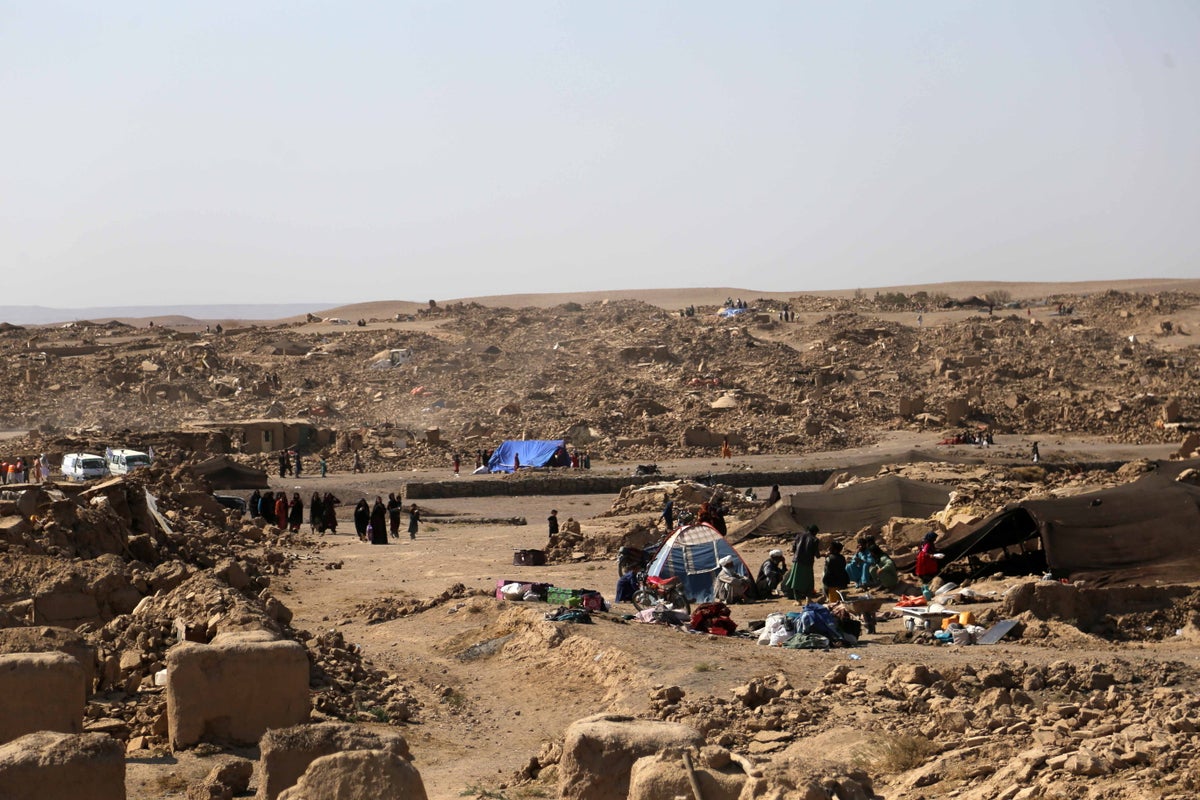
One person was killed and around 150 others injured after a powerful earthquake of magnitude 6.5 struck western Afghanistan on Sunday, just over a week after strong quakes and aftershocks killed thousands of people and flattened entire villages in the same region.
Mohammad Zahir Noorzai, head of the emergency relief team in Herat province, said that casualty numbers might rise, as they haven’t reached all affected areas yet.
The US Geological Survey (USGS) said the latest quake’s epicentre was about 34km (21 miles) outside Herat, the provincial capital, and 8km (five miles) below the surface. A 5.5 magnitude aftershock hit the area soon after.
There were no immediate official reports of possible casualties or damage.
The earthquakes on 7 October flattened whole villages in Herat, in one of the most destructive quakes in the country’s recent history.
More than 90 per cent of the people killed by a 6.3-magnitude earthquake in western Afghanistan last weekend were women and children, UN officials said.
Taliban officials said last week’s earthquake killed more than 2,000 people of all ages and genders across Herat province. The epicentre was in Zenda Jan district, where 1,294 people died, 1,688 were injured and every home was destroyed, according to UN figures.
Women and children were more likely to have been at home when the quake struck in the morning, said Siddig Ibrahim, the chief of the UNICEF field office in Herat.
The initial quake, numerous aftershocks and a second 6.3-magnitude quake on Wednesday flattened villages, destroying hundreds of mud-brick homes that could not withstand such force. Schools, health clinics and other village facilities also collapsed.
Besides rubble and funerals after that devastation, there was little left of the villages in the region’s dusty hills. Survivors are struggling to come to terms with the loss of multiple family members and in many places, living residents are outnumbered by volunteers who came to search the debris and dig mass graves.







